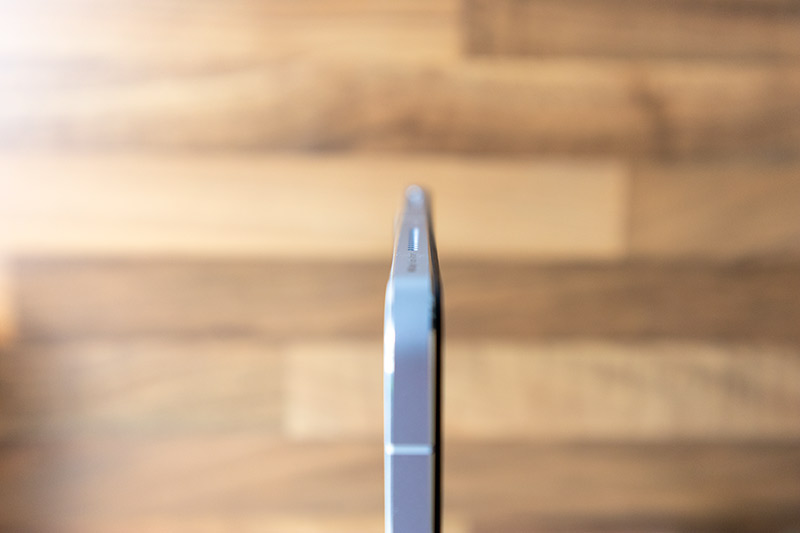
We tried: Xiaomi Pad 5 - the first Hungarian test
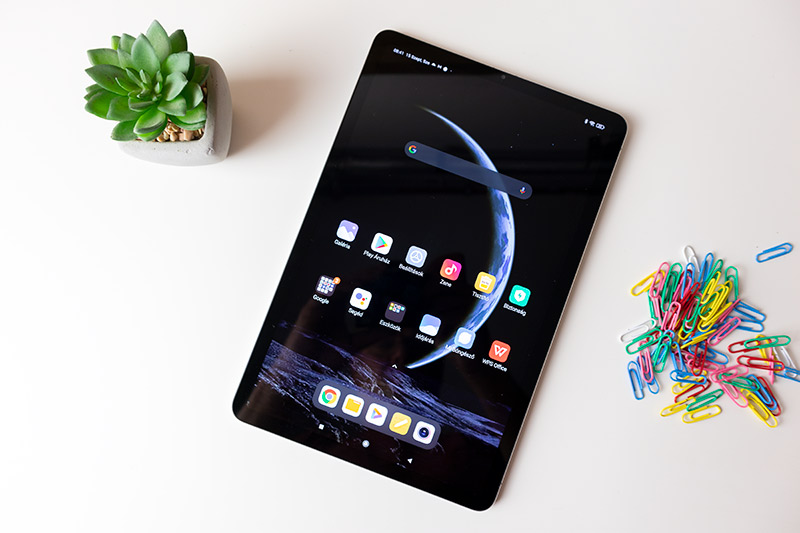
Xiaomi's previous tablet came out in 2018, now here's the successor!

contents show
Introductory
The flow of the world has turned incredibly big since 2018, not just at Xiaomin, but especially there. When the Xiaomi Mi 2018 tablet was released in 4, we were hoping it would arrive in the EU market as well, but it never officially happened.
Since the introduction of the previous version, a lot has happened around the manufacturer’s house. Although we already knew around 2018 that Xiaomi would soon start a huge international expansion, I think few of us expected what happened. Specifically, the top of the podium is being besieged among mobile manufacturers, and it is now a foundation for major products to reach the international market as well.

And the Xiaomi Pad 5 is an important product because, as I wrote, the manufacturer hasn’t released a new machine in 3 years, and that amount of time in this industry seems infinitely long.
But now here is the new generation. We can talk about a generation, as the Xiaomi Pad 5 came with a Pro variant. In this article, you can get acquainted with the Xiaomi Pad 5 and, importantly, with the global version of it, which of course feels good in Hungary and also speaks Hungarian!

This machine, intended for the international market, will be officially introduced today, so the first tests of it can only be published in Hungarian today. Of these, as with the Redmi 10 phone, it is likely to be one of the first.
Packaging and exterior
The packaging of the machine is subtly minimalist. I note the Mi Pad 4 didn’t have something big to eat either, but if it can, it’s even simpler now. White cardboard with gold inscription on top: Xiaomi Pad 5. The only interesting thing here is that the manufacturer - as we know from the news - has left the Mi member out of the name of the products, it can be seen here as well.

Everything is minimalist inside. In addition to the board, a description, a charger (33 watts), a USB C cable await us. It is important to note that a keyboard and pen included with the case can be purchased separately, but these are not part of the basic package.

Let's see the look!
The machine measures 254.7 x 166.3 x 6.9 millimeters and weighs 511 grams. These data rival those of this year’s iPad, though it’s still heavier a few grams than the apple machine and a millimeter thicker.
I am writing this because holding the Xiaomi Pad 5 in my hand, I can’t stop comparing it to Apple’s savior this year, as the exterior has become Apple by deception. The front is of course glass, the frame of aluminum on the back I feel is plastic, although it looks heavily glass.

The two machines are very similar, but not only because of the angular side lines, but also because of the location and size of the camera island. The biggest difference here is that we find 2 cameras in the iPad, and only one camera here. The Xiaomi Pad will be a 5 Pro, which gets two rear-facing cameras.
At the bottom edge are two speaker grilles, a microphone and a Type-C connector, at the top is another microphone, two more speaker grilles and a power button. On the right is the magnetic holder for the volume control and the optional pen, and on the opposite side is the connector for the optional keyboard. No SIM tray.

The front panel display is 11 inches, the total area is 350,9 square inches, and the front panel display ratio is approx. 83 percent, meaning the frames were pretty thin.
Hardware, software
We could rightly expect Xiaomi to pack percussion hardware into his new tablets after 3 years. It basically came in. We get strong procit, lots of memory and lightning fast storage. The display is not everyday either, the smaller Pad can also be used on the camera front, let's not talk about the bigger one. So, overall, the hardware is fine!

As usual, we start with proci, memory, mass storage, then the display, then the cameras, and finally the other capabilities. Let's hit the horses!
Central unit, memory, storage
We have become accustomed to the fact that, as opposed to phones, manufacturers pack top-of-the-line hardware into tablets as infrequently as possible. This is also the case with the Xiaomi Pad 5, but luckily we won't be short of strength anyway!
The central unit is the Qualcomm Snapdragon 860, which is new and not. Resolving the contradiction is simple. The manufacturer unveiled the Snapdragon 2018 at the end of 855, on which its top-of-the-line phones from 2019 were then built. Then in mid-2019, a turbocharged version of the SP855, the 855+, was also released, which differed essentially only in its elevated clock speeds from its predecessor.
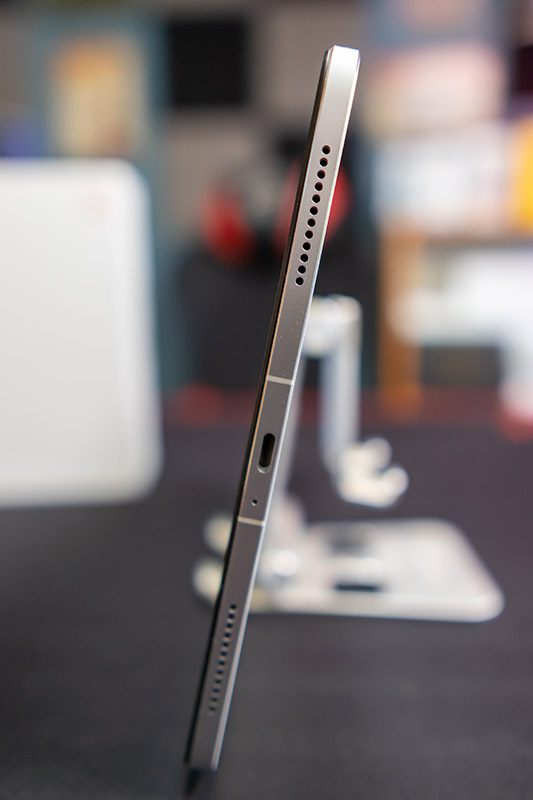
The Snapdragon 860 is nothing more than a modified, up-to-date version of this 855+ apex tile. The proci is the same, the clocks are unchanged, but the memory controller has been updated (now 16GB of LPDDR4x memory can be packed with it) and has also got new camera features, not to mention night mode and dual video recording.
So the point is that the Snapdragon 860 is the flagship Qualcomm used less than two years ago, and its power is still ample for everything today. Nothing shows this better than the fact that the POCO X3 Pro gamer phone, made especially for gaming lovers, is also equipped with this chip!

In the central unit, the proci is, of course, eight-core. The cores are divided into three clusters, with a core at the top, the 2,96 GHz clock-capable Kryo 485 Gold. The second cluster features three Kryo 2,42 Gold cores running at up to 485 GHz, and the third has four Kryo 1,78 Silver cores capable of running at 485 GHz. The graphics controller is the Adreno 640 with a clock speed of 672 MHz.
In terms of memory, the cross-section will not be tight either, as the 6 GB capacity consists of LPDDR4x modules. Because of the speed of the storage, I don't think anyone will cry, since the 128 or 256 GB of storage is already based on UFS 3.1, so there will be no error!
Display
When I received the specification of the machine, my first thing to confirm was to get an AMOLED display. No, the panel remained IPS, which was sad at first. The sadness only disappeared when I turned on the machine.
Let’s start there so that the brightness can reach 500 nit. That’s a few, 450 phones have been the usual 10 nits for IPS display phones lately, more than XNUMX percent plus significant.
It is also very important, and perhaps also explained by the lack of AMOLED, is that the panel update is not less than 120 Hz, it is suspected that an 11-inch, 120 Hz AMOLED panel would have made the machine unnecessarily expensive.

Importantly, the IPS panel is not only outstanding in terms of backlighting. The color depth is 10-bit, we also get TrueTone, Dolby Vision, HEVC, HDR10, HDR10 + and HLG support, which in summary means that we can expect to have an outstanding visual experience and the machine will be largely suitable to serve our multimedia needs.
More importantly, the machine has a Widevine L1 security level, which means that Netflix content can be played in high definition on it!
Kamerák
Well, of course, the chapter won’t be as exciting as it was with the Redmi 10, as we only get two cameras. As I wrote, there won’t be one but two optics on the back of the Pro version, so the one is better, but I think compared to the fact that it’s “just” a tablet, that’s not bad either.
The back of the single camera has an f / 2.0 aperture resolution of 13 megapixels (4208 x 3120 px). We also get less in terms of capabilities than a phone, but there is HDR, mock-up effect, beautification, color effects, artificial intelligence-supported object recognition when we take photos.

You can also video (4096 x 2160 px), choose from 720p 30 fps, 1080p 30 fps, or even 4K 30 fps modes. However, there is no vibration damping.
The self-contained camera on the front panel is 8 megapixels, allowing you to capture up to FHD videos at 30 frames.
Other skills
Among the sensors, the AIDA64 found an accelerometer, magnetometer, gravity sensor, light sensor and gyroscope. From wifi we can use the c standard path, of course we can use two channels, from Bluetooth the 5.0 has already entered with A2DP support.
Two things are missing, one is the mobilnet option, meaning there is no SIM tray. I miss it less, everyone has a phone in their pocket, you can also share the net on it, so that’s not a problem. I feel this is all the more flawed because the GPS feature has been missed, I say this so I have never tried to navigate with a tablet.

What I really appreciate about it is the 4-speaker stereo system. It had to be next to the frank display to make watching movies a pleasure.
Szoftver
The tablet is running MIUI, and even when the test was written, version 12.5.2. It is already based on Android 11 and has essentially the same capabilities as the MIUI on the phones. What makes it different is that the interface has been minimally redesigned for tablet, larger display use. However, this is really not a significant difference compared to a telephone MIUI. It is also important that the last security update is July.

I’m not going to write litany about MIUI, as I’ve said and described several times, maybe the best, or I think the best Android-based interface in which we can customize the look and everything else down to the tiniest bit. I really like it, and if there is a way and an opportunity for it, I don’t want to use another system in the near future.
I mean, I'll stay at Xiaomi!
Measurements, tests
Of course, I also ran the usual tests, which again, of course, did not bring any surprises. As usual, Antutu and 3DMark displayed 3D capabilities, and PCMark and Geébench displayed capabilities during normal use.
As I wrote above, the central unit is a turbocharged, updated version of the peak Snapdragon tile two years ago, so it’s no surprise that the Antutu score reached 560 points, to exactly 560. Not only did the CPU score get high, but so did the GPU and memory scores, the latter presumably due to the fast dual-channel memory controller and also the fast LPDDR822x memories.
Of course, the scores of the other tests were also pretty nice, maybe the PCMark Storage 2.0 score is worth highlighting, which shows the speed of the storage. That's 22 points. You can see the other values in the pictures below.
 |  | 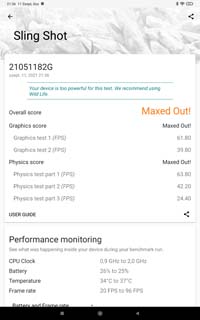 |
 |  |  |
 |  |  |
Photography, video recording
The most important thing about the first sentence: I got a very pleasant surprise when using the back camera!
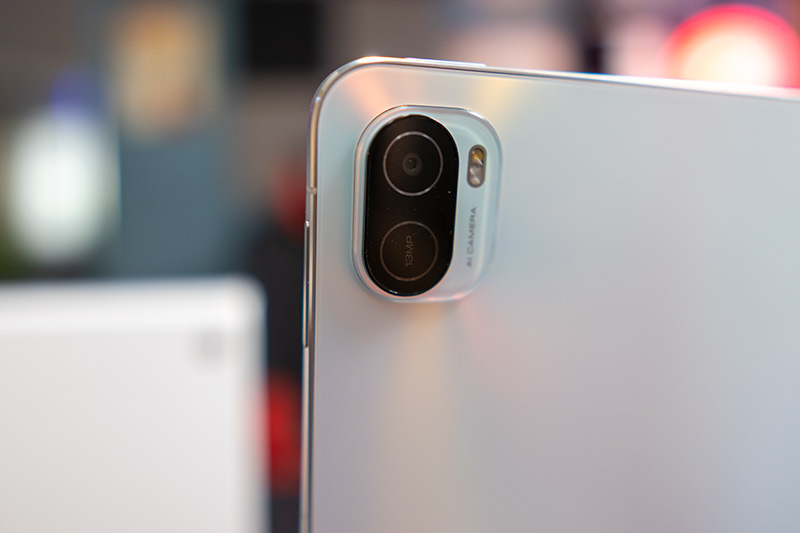
What reminded me of the Xiaomi Pad 5’s cameras is that once again it has been proven that the megapixel value says essentially nothing about the quality of a finished image. The Pad 5's 13 megapixel rear camera boasts many 48 megapixel solutions in terms of quality!
No, now don’t let anyone believe it’s a top camera because it isn’t. On the other hand, compared to the 13 megapixels, the quality it offers is so good that I dare say it is even suitable for possibly taking photos that can be saved or preserved with it.
 |  |
 |  |
 |  |
Tastes and slaps are different, I like the end result the camera releases. I like the colors, the sharpness, and the little distortion. Of course, it is difficult to cope with extreme situations, and if there is a relatively dark and light part in an image, it can be difficult to find a usable mean.

The same can be said for video. The camera is capable of taking 4K shots, 13 megapixels is enough for that. As far as I know, there is no vibration reduction in it, but it is according to AIDA64. Let's say the program couldn't find the type of proci either, so… That's why I sent the report file to Fiery, the developer of the program, maybe it's useful.
I don’t have to say much about the video, and then the pictures really speak for me here. I cut a video a little longer than a minute, check it out!
Summary
A tablet is not an overly complicated structure, so there is not much to analyze on it. However, we need to ask two questions. One is whether the machine meets today’s requirement, the other is whether it is worth the price or not.
Well, the answer to the first question is clear, satisfying, but only almost. I don’t miss the mobilenet option, just as I’ve never navigated a tablet before, but I know there will be someone who will miss it and there will be even more who won’t, but it won’t be able to stand to not get hooked on it because of it.

In fact, a shared net on our phone can solve the problem of mobilnet, even if the solution is not as elegant as using a SIM card in a tablet. GPS can also be replaced with an external Bluetooth unit, but that's not the case. In addition, these capabilities are already found in almost all entry-level tablets.
Aside from these two things, the machine is perfect. The exterior has become very nice, leaving the plastics, the full aluminum frame, the glass-effect back cover, the thin coffees raised the quality to iPad level, and I think that says it all.

I have no sense of lack of knowledge either. The power of the machine is good enough to play with, so then you can easily cope with essentially any other program.
The display was excellent. I have a basis for comparison, as I use an AMOLED display tablet, I put them next to each other, and I really don't see much difference. I might have seen it in scorching sunlight, but under normal lighting conditions, nothing.
The non-plus ultra is that this display also has a 120 Hz image refresh, which will make players love it.
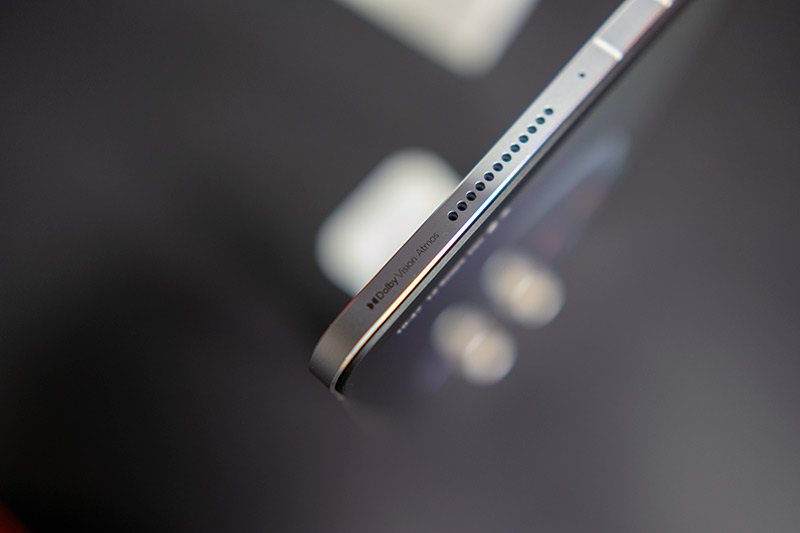
I can't go by the sound system without a word either. A four-speaker system is no longer uncommon with more normal tablets, but what comes out of this tablet is a miracle. Well, it's not even hi-fi, but compared to the fact that it comes from a flat board, the sound is quite amazing.

So these capabilities come in handy if you want to play, but also if you use the Xiaomi Pad 5 for multimedia. We have Widevine L1, so Netflix can be enjoyed in full resolution, you can install HBO Go or Prime on it, whatever you like, and you can watch movies in high definition with brilliant colors and sound.
Of course, the skills come in handy in everyday life, even with normal use. Due to the 120 Hz, the content on the display flows smoothly and as far as possible we protect our eyes as well.
So far, basically everything is good, but not only are the details good, but so is the whole thing. It feels very good to hold, use. If I dare say something that is a real premium feeling, it is. It’s hard to describe in words, it’s simply good to hold, but it’s an infinitely scary feeling that I can drop, break and then it won’t be anymore.

By the end of the usual it is worth or not worth the question, that is, the price.
The cheaper 6 + 128 GB installation costs 299 euros, while the more expensive 6 + 256 GB ones cost 349 euros, which means a price of 105-125 thousand forints. These prices only seem like a lot until we look at what we get for that at home.
Well, if it’s an iPad, then the machine from two years ago with 3GB of memory and 32GB of storage already fits into that price level. For 121, we can get a plain FHD resolution from Samsung with 2GB of memory and 32GB of storage. Lenovo can give 108 for a much weaker Snapdragon 662 percent, 4GB of memory and 128GB of storage.
If we are looking for a machine that is paired with the Xiaomi Pad 5, then maybe the Huawei Mate Pad Pro is what we can find. The capabilities of the two machines are almost the same, the proci is different, but it is also similar in terms of strength. The lowest price of Huawei in Hungary is 163 thousand forints. Compared to the Xiaomi Pad 5 105 thousand price.
So, I think after so many examples, it’s understandable why I’m saying Pad 5’s pricing has become very friendly!
You can buy the machine by clicking on the link at the end of the article, you can choose between two colors, gray and white. So the build can be with 128 or 256 GB of storage, the amount of memory does not change, it is 6 GB.
There are also gifts. The first 100 customers will receive a nice package in Ajcsi, which will include a screen protector and a camera protection film as well as a magnetic case. Every buyer gets a transparent back cover (at least I hope the clear case wants to report this) and a buyer will get back the price of the tablet they bought.
As we are talking about an official Xiaomi distributor, the machine comes with a 2 year warranty.
Let’s end this article with the Xiaomi sentence that perhaps best describes the Xiaomi Pad 5, i.e.: Play hard, work smart. That is, somehow like this: Play hard, work smart!
Here is the introductory action page:
Xiaomi Pad 5 introductory action
And shopping here:
Xiaomi pad 5
Want to win the Xiaomi Pad 5 tablet in this article? Join our Facebook group, details coming soon!










